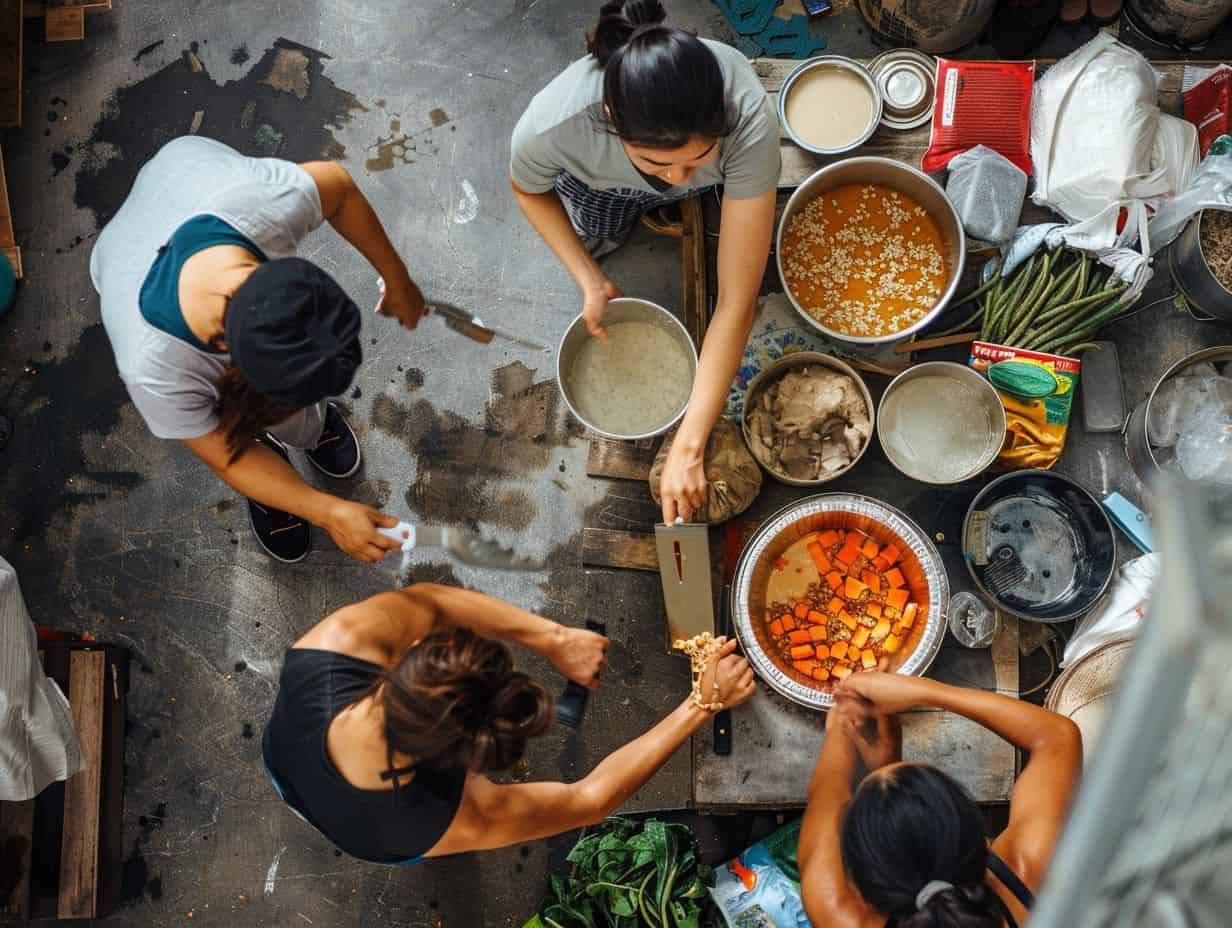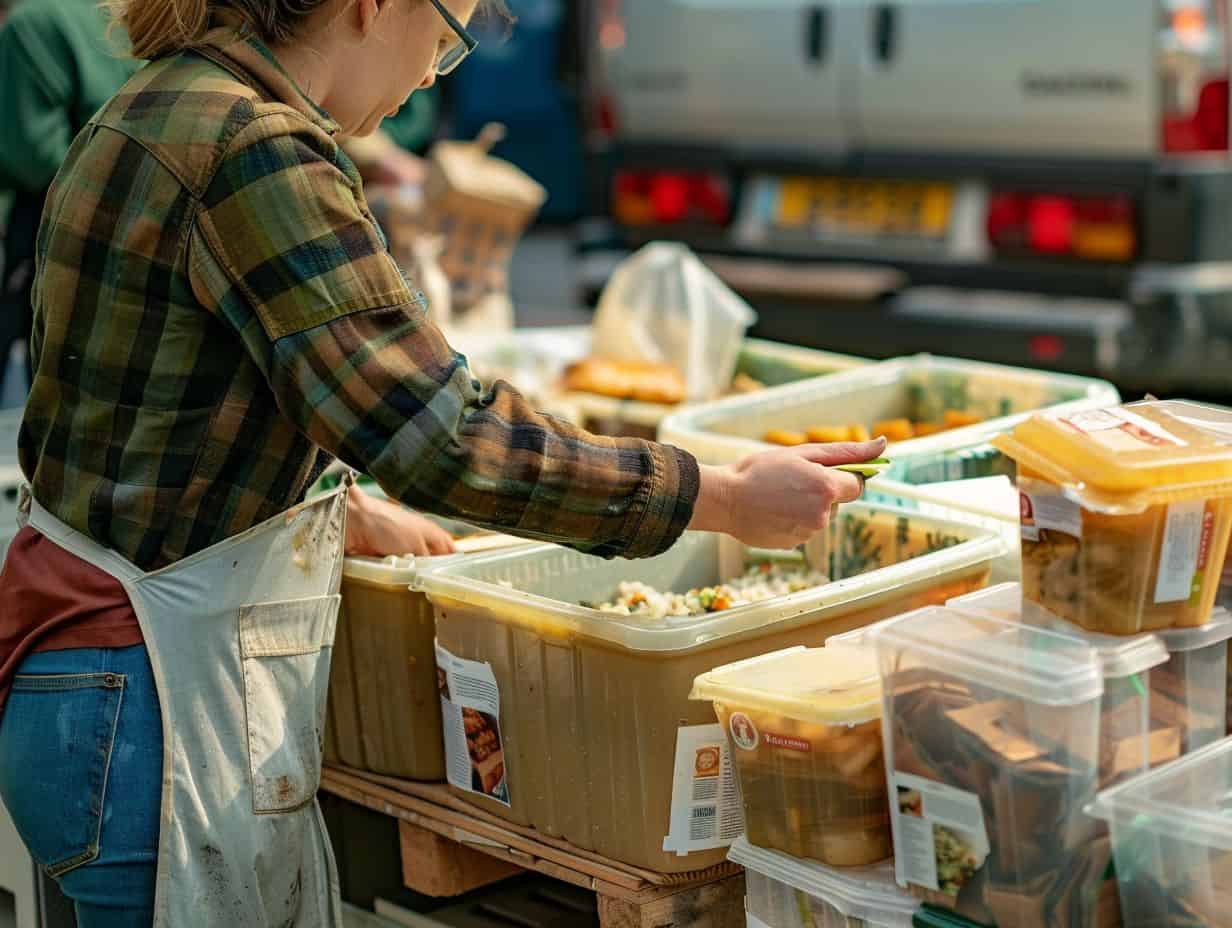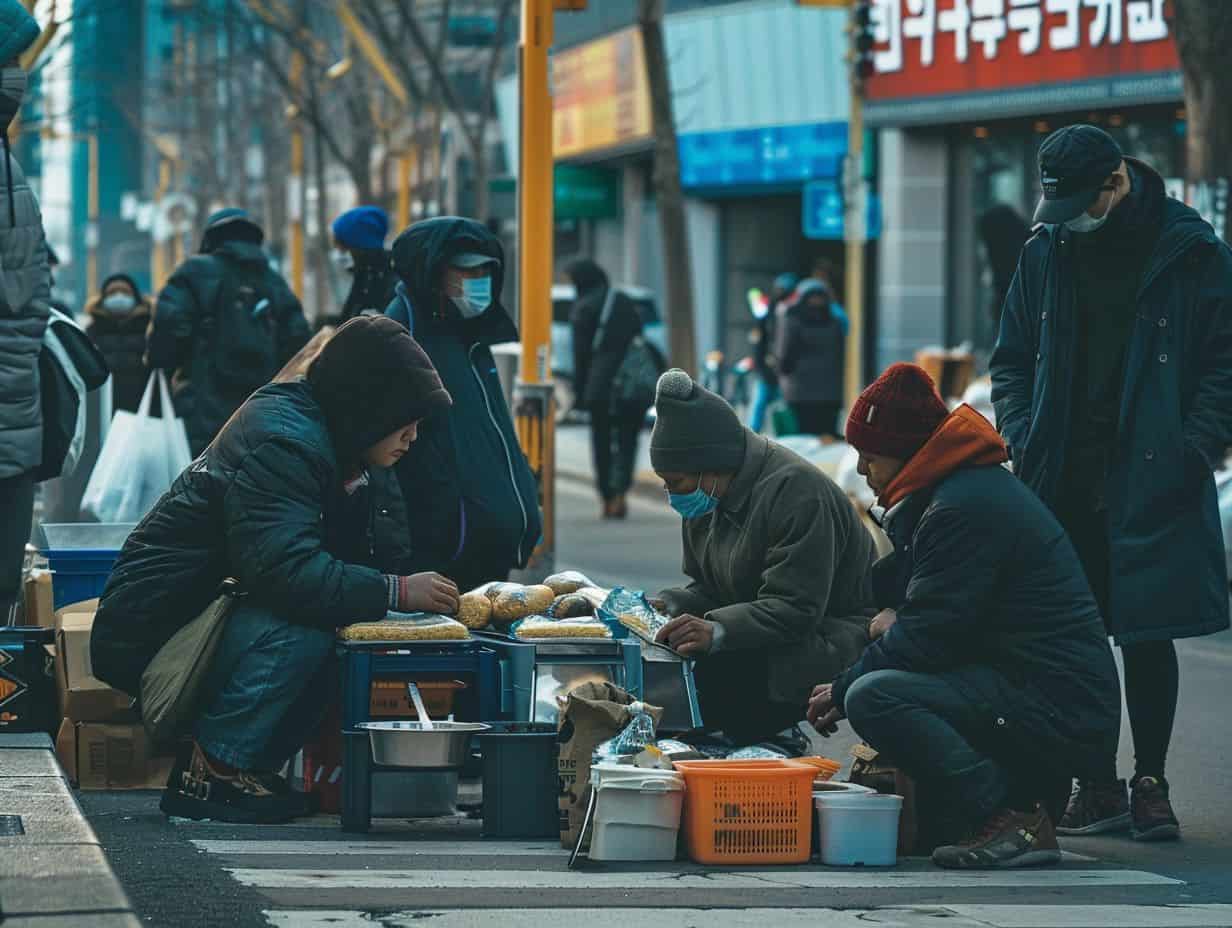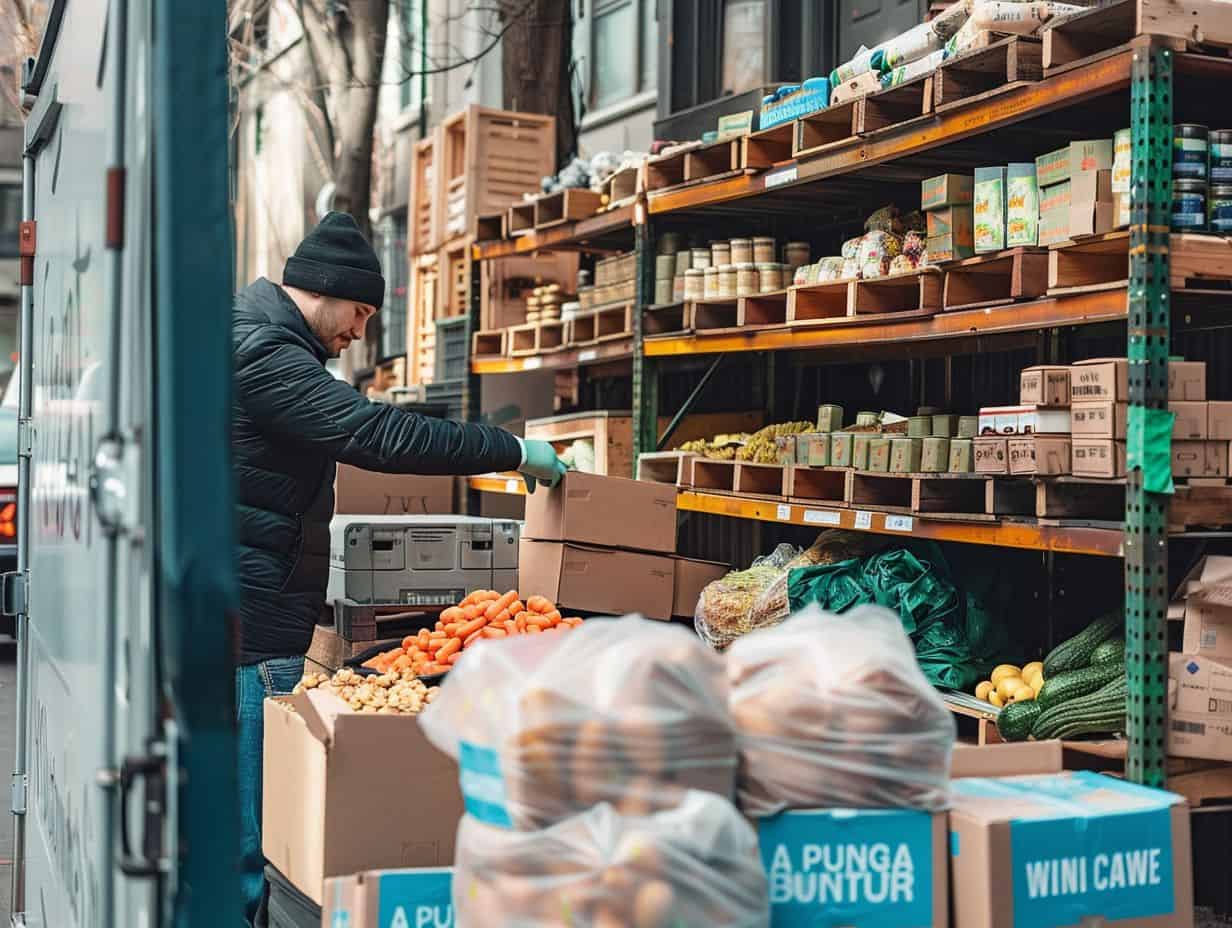In modern urban settings, readiness for emergencies is essential. From natural disasters to power failures, city dwellers need to have a strategy in place to ensure their safety and security.
One common approach to emergency preparation involves utilizing MREs (Meals Ready-to-Eat), offering a convenient and durable food option. But what do MREs entail, and how can individuals in urban areas integrate them into their emergency preparations?
An examination of the advantages, applications, and potential pitfalls to be mindful of when relying on MREs for urban survival is warranted.
What Is Urban Survival?
Urban survival is the ability of city dwellers to navigate and thrive in emergency situations within urban environments. It involves a range of survival skills, strategies, and self-sufficiency practices that are tailored to urban challenges, with a focus on crisis management and resilience.
During crises, city residents encounter specific challenges like limited resource access, crowded conditions, and potential social unrest. Acquiring skills such as emergency communication, first aid, and urban foraging can significantly improve one’s chances of surviving in cities during disasters.
Understanding how to secure shelter, purify water, and navigate urban landscapes without traditional utilities are key strategies for urban survival. Being equipped with a survival kit, knowing evacuation routes, and staying informed about local emergency protocols are also crucial for urban self-sufficiency and resilience.
Why Do Urbanites Need to Prepare for Emergencies?
Urbanites need to prioritize emergency preparedness because of the increased risks associated with urban environments. Effective emergency planning and disaster readiness are essential for handling urban challenges, responding to emergency situations, and enhancing urban resilience in various disaster scenarios.
Living in a densely populated city brings its own unique risks and challenges that can worsen the impact of natural disasters or unexpected emergencies. Vulnerabilities in infrastructure, such as overcrowding, limited access to resources, and complex transportation systems, can complicate evacuation and hinder timely assistance during a crisis.
Urban areas are more susceptible to power outages, water contamination, and communication failures, underscoring the importance of urbanites proactively preparing for such situations. By investing in emergency preparedness measures, city residents can better safeguard themselves, their families, and their communities in times of crisis.
What Are the Most Common Emergencies in Urban Areas?
Urban areas are susceptible to a range of emergencies, including natural disasters like earthquakes, hurricanes, and floods, as well as man-made crises such as power outages, terrorist attacks, and civil unrest. These emergency situations require a high level of urban resilience and effective emergency preparedness among city dwellers.
Urban centers encounter challenges like wildfires, pandemics, transportation accidents, and hazardous material spills that can disrupt daily life and cause widespread damage. Urban resilience refers to the cities’ ability to adapt, recover, and quickly rebound from such crises.
Emergency preparedness is vital to provide individuals, communities, and authorities with the necessary tools and strategies to respond effectively during emergencies, minimizing the impact on urban populations and infrastructure.
What Are MREs?
Meals Ready-to-Eat (MREs) are self-contained individual rations intended for consumption during emergencies or when regular food preparation is impractical. These supplies offer essential food rations and nutrients to support individuals during crises.
MREs are carefully designed to provide a balanced mix of proteins, carbohydrates, fats, vitamins, and minerals necessary for sustaining energy levels and overall health. A notable characteristic of MREs is their extended shelf life, making them suitable for long-term storage without requiring refrigeration. Additionally, MREs are lightweight and portable, facilitating easy transportation and distribution in emergency situations.
Due to their convenient packaging and simple preparation, MREs are a dependable source of sustenance in challenging circumstances.
How Are MREs Different from Regular Meals?
MREs are distinct from regular meals due to their specialized packaging, extended shelf life, and high nutritional density. Unlike regular meals, MREs are intended for long-term storage and consumption during emergencies, playing a crucial role in survival during challenging situations.
The packaging of MREs is designed to endure harsh conditions, such as extreme temperatures and rough handling, ensuring that the contents remain undamaged and safe for consumption. With regards to shelf life, MREs can maintain their quality for several years without refrigeration, serving as a dependable source of sustenance in times of necessity. The nutritional composition of MREs is meticulously balanced to provide essential nutrients and calories necessary for energy and strength, tailored to meet the requirements of individuals facing demanding circumstances.
Are MREs Safe to Eat?

Meals Ready-to-Eat (MREs) are designed and packaged to ensure they are safe for consumption, even in challenging environments or when stored for extended periods. Thorough testing and quality control procedures are in place to maintain the safety and nutritional value of MREs, establishing them as dependable emergency food options.
This meticulous process includes evaluating ingredients, cooking techniques, packaging materials, and storage conditions to confirm that MREs are free from contaminants and harmful bacteria. Quality assessments are carried out throughout production to monitor freshness, flavor, and nutrient content, guaranteeing that each MRE meets the required standards for safe consumption. Sensory evaluations are conducted on MREs to evaluate their taste and overall quality, providing consumers with assurance that these meals are not only safe but also satisfying during emergency scenarios.
How Long Do MREs Last?
MREs typically have a long shelf life, lasting from 3 to 5 years or more based on storage conditions and packaging integrity. Properly stored MREs can serve as dependable emergency supplies for extended durations, offering a stable source of sustenance during emergencies.
Factors like temperature, humidity, and light exposure are key in determining the longevity of MREs. Keeping MREs in a cool, dry place shielded from direct sunlight can significantly extend their shelf life.
Regularly rotating MRE stock using the ‘first in, first out‘ method is crucial to ensure the consumption of older packs first. It’s also important to inspect the packaging for any damage or punctures, as even minor breaches can jeopardize the contents.
By adhering to these storage practices, individuals can optimize the durability of their MREs and have the reassurance of having reliable emergency rations ready when necessary.
How Can MREs Be Used for Emergency Planning?
MREs are important components of emergency planning due to their convenient, portable, and long-lasting nature as food provisions for individuals and families. Including MREs in emergency kits and preparedness strategies can improve survival capabilities and ensure access to essential nutrition during crises.
The practicality of MREs stems from their shelf-stable characteristics, which eliminate the need for refrigeration or cooking facilities. This feature makes them suitable for various emergency situations, such as natural disasters, power outages, or evacuations. Additionally, the nutritional content of MREs is significant, as they are specifically designed to offer a mix of carbohydrates, proteins, and fats necessary for sustained energy levels. Integrating MREs into emergency plans enables the swift and efficient distribution of food resources, which can help alleviate potential food-related challenges during difficult times.
What Are the Benefits of Using MREs for Emergency Planning?
The advantages of using MREs in emergency planning include convenience, portability, extended shelf life, and nutritional balance. MREs appeal to the survivalist mindset by providing quick and dependable food sources during emergency response, effectively utilizing urban resources for sustainable emergency survival strategies.
The compact and pre-packaged design of MREs makes them well-suited for on-the-go situations where traditional meal preparation is impractical. Offering a range of menu choices, MREs ensure individuals have access to balanced meals even in challenging circumstances. Their lengthy shelf life enables the stocking of supplies well in advance, rendering them a practical option for emergency preparedness. The nutritional content of MREs is formulated to meet the requirements of individuals in high-stress situations, delivering essential nutrients to support physical and mental well-being.
What Types of Emergencies Are MREs Useful for?
MREs have a wide range of applications in various emergency situations, such as natural disasters, power outages, transportation disruptions, and urban crises. The versatility and sustainability of MREs make them important elements of urban survival strategies, contributing to sustainable urban living and resilience.
These ready-to-eat meals offer a compact and convenient source of nutrition when traditional food sources may not be accessible. In urban areas where limited space and resources can complicate emergency responses, MREs provide a practical solution to ensure individuals have access to essential sustenance. The extended shelf life of MREs reduces food waste and promotes sustainable practices in urban settings. By including MREs in emergency preparedness plans, cities can improve their resilience and better prepare residents to handle unexpected challenges.
How Can Urbanites Incorporate MREs into Their Emergency Plans?

Urban dwellers can incorporate MREs into their emergency plans by including them in comprehensive emergency kits alongside essential supplies such as water, first aid items, communication devices, and MREs. By adopting tactical urbanism principles, urban residents can improve emergency management and guarantee access to critical survival resources.
These emergency kits should be customized to meet individual requirements, taking into account factors like dietary restrictions or specific medical needs. Regularly reviewing and updating these kits is important to ensure that the MREs are not expired and that all components are functioning properly. Understanding the proper storage and rotation of MREs is crucial for maintaining their effectiveness in emergencies.
By adhering to these strategies, urban residents can enhance their disaster preparedness and resilience in urban environments.
What Other Supplies Should Urbanites Have for Emergencies?
Urbanites should have essential emergency supplies in addition to MREs, such as water, shelter materials, protective gear, tools, lighting sources, and communication devices. These survival gear and prepping items enhance emergency readiness and resilience, complementing the role of MREs in sustaining urban survival.
These diverse emergency supplies play a crucial role in preparing individuals for various unexpected scenarios in urban environments. Survival gear, like first aid kits, multi-tools, and emergency blankets, can be lifesaving in critical situations. Prepping tools, such as fire starters, compasses, and signaling mirrors, are essential for navigation and creating shelter. Emergency survival items, like duct tape, rope, and hygiene products, contribute to overall comfort and safety in challenging circumstances. Including these items alongside MREs ensures a well-rounded preparedness kit for effective urban survival strategies.
How Can Urbanites Store MREs Properly for Emergencies?
Proper storage of MREs is crucial for maintaining their quality and prolonging their shelf life. MREs can be stored in cool, dry locations away from direct sunlight and extreme temperatures to protect their nutritional value and usability. Building an emergency supplies stockpile and incorporating MREs into urban survival strategies ensures readiness for unexpected events.
To further protect MREs, it is recommended to regularly rotate through your stockpile to prevent any unit from remaining unused for extended periods. Maintaining a detailed inventory of emergency supplies, including the expiration dates of MREs, and replenishing them as necessary is important. Consider vacuum-sealing individual MREs or storing them in airtight containers to reduce exposure to oxygen and moisture, which could hasten the deterioration of the components. Properly stored MREs can serve as a dependable source of sustenance during emergencies, providing essential nutrients and energy to sustain individuals until assistance arrives.
What Are Some Common Mistakes to Avoid When Using MREs for Emergency Planning?
When using MREs for emergency planning, it is advisable for urbanites to avoid common mistakes like failing to rotate supplies, disregarding individual dietary needs, and underestimating water requirements. Participating in urban survival training can assist individuals in addressing these pitfalls and improving their emergency preparedness planning effectively.
Understanding the significance of proper planning is essential to guarantee that emergency supplies are current and prepared for use when necessary. Urbanites should establish a rotation system to prevent expired MREs from being neglected, which could jeopardize their effectiveness during crises. Considering individual dietary requirements is crucial to ensure that everyone’s nutritional needs are satisfied during emergencies. By staying informed about recommended water intake and storage practices, urbanites can better assess their hydration needs in disaster scenarios.
How Can Urbanites Stay Prepared for Emergencies in Urban Environments?
Maintaining urban preparedness involves proactive measures such as conducting risk assessments, creating emergency communication plans, participating in community drills, and acquiring necessary emergency supplies like MREs. Prioritizing urban safety, readiness, and strategic urban environment planning give the power tos urbanites to implement effective urban survival solutions during emergencies.
Engaging with the community plays a crucial role in bolstering urban preparedness. By establishing strong neighborhood networks, urbanites can share resources, information, and support during critical times. Staying informed about local emergency protocols and evacuation procedures can enhance overall readiness.
Developing skills such as first aid, basic self-defense, and fire safety also prove valuable in handling diverse emergency situations. Incorporating sustainable practices in urban planning contributes to creating resilient and adaptable city structures that can withstand and bounce back from unexpected crises.
Frequently Asked Questions

What are MREs?
MREs, or Meals Ready to Eat, are individual field rations used by the military, designed to provide essential nutrition in emergency situations. They are easy to store, transport, and consume without the need for additional cooking or preparation.
Why are urbanites turning to MREs for emergency planning?
Urbanites are turning to MREs for emergency planning due to their convenience, long shelf life, and compact size. With the increase in natural disasters and other emergencies, more people are recognizing the importance of having a reliable food source during these situations.
How long do MREs last?
MREs have a shelf life of up to 5 years when stored in a cool, dry place. This makes them ideal for emergency planning, as they can be stored for extended periods of time without the need for rotation.
What types of food are included in MREs?
MREs typically include a main entree, side dishes, snacks, desserts, and a drink mix. They also come with utensils, a heating element, and napkins. The menu options vary, but some common meals include pasta, rice, beans, and meat dishes.
Can MREs be customized for dietary restrictions?
Yes, there are MRE options for individuals with dietary restrictions, such as vegetarian, gluten-free, and kosher. It is important to check the labels and ingredients before purchasing to ensure the MRE meets your dietary needs.
Are MREs safe to eat?
Yes, MREs are safe to eat as they are approved by the U.S. Department of Defense and undergo strict testing and quality control measures. However, it is important to follow proper storage and consumption guidelines to ensure food safety.


